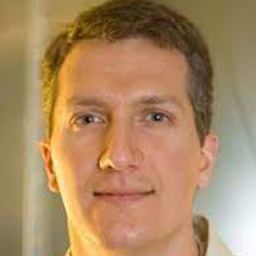
April 22, 2021
1:00-2:00 p.m.
Use this link to watch the recorded seminar (UT Dallas community only).
ABSTRACT:
Electron spins are excellent candidates for solid state quantum computing due to their exceptionally long quantum coherence times, which is a result of weak coupling to environmental degrees of freedom. However, this isolation comes with a cost, as it is difficult to coherently couple two spins in the solid state, especially when they are separated by a large distance. Here we combine a large electric-dipole interaction with spin-orbit coupling to achieve spin-photon coupling. Vacuum Rabi splitting is observed in the cavity transmission as the Zeeman splitting of a single spin is tuned into resonance with the cavity photon. We achieve a spin-photon coupling rate as large as gs/2π = 10 MHz, which exceeds both the cavity decay rate κ/2π = 1.8 MHz and spin dephasing rate γs/2π= 2.4 MHz, firmly anchoring our system in the strong-coupling regime [1]. We next utilize spin-photon coupling to achieve a resonant spin-spin interaction between two spins that are separated by more than 4 mm [2]. Our results demonstrate that microwave-frequency photons can be used as a resource to generate long-range two-qubit gates between spatially separated spins. I will also present extensions of this work to dot-donor systems, where theory suggests that high fidelity microwave readout of a single nuclear spin state is within reach [3].
[1] X. Mi, M. Benito, S. Putz, D. M. Zajac, J. M. Taylor, G. Burkard, and J. R. Petta, A coherent spin–photon interface in silicon, Nature 555, 599 (2018).
[2] F. Borjans, X. G. Croot, X. Mi, M. J. Gullans, and J. R. Petta, Resonant microwave-mediated interactions between distant electron spins, Nature 577, 195 (2020).
[3] J. Mielke, J. R. Petta, and G. Burkard, Nuclear spin readout in a cavity-coupled silicon double quantum dot, arXiv:2012.01322.
BIOGRAPHY:
Jason Petta is the Eugene Higgins Professor of Physics at Princeton University. He received a PhD in physics from Cornell University in 2003. Petta’s early work focused on spectroscopy of quantum states in metallic quantum dots. As a postdoctoral fellow at Harvard in the group of Charlie Marcus, Petta played a leading role in a series of experiments demonstrating trapping and detection of single electrons, as well as a seminal experiment demonstrating coherent control of two-electron spin states. Since moving to Princeton in 2007, Petta’s research group has developed quantum devices in silicon. Recent advances include the fabrication of a scalable silicon quantum dot device architecture, shuttling a single charge down an array of quantum dots, and the demonstration of a high fidelity two qubit gate. In a related series of experiments, Petta’s group has developed hybrid quantum devices incorporating semiconducting and superconducting elements. Physics breakthroughs include the demonstration of strong coupling of a single charge to a single photon, strong coupling of a single spin to a single photon, and in 2020 long-range coupling of two spins separated by 4 mm using microwave frequency photons.
Professor Petta is a recipient of the Presidential Early Career Award for Scientists and Engineers, a National Science Foundation CAREER Award, the McMillan Award, the American Association for the Advancement of Science Newcomb Cleveland prize, and the Lee-Osheroff-Richardson prize. Petta was a Moore Foundation Experimental Investigator in Quantum Materials from 2014 to 2020. Petta was recently elected as a Fellow of the American Physical Society and Fellow of the American Association for the Advancement of Science.